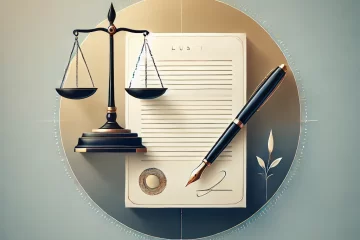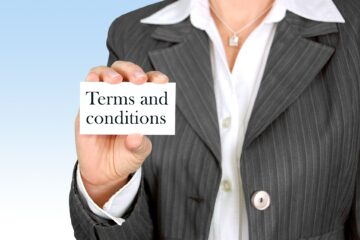![]()
Introduction:
Immovable Properties, as the name implies are those properties that cannot be moved from one place to another. They are fixed to the ground and their movement is not possible. A warehouse is a good example of Immovable property. Now, the question arises as to how a person, other than the actual owner of such property can get possession of such property. The Transfer of Property Act[1], 1882 is the law passed by Indian legislation that provides for the transfer of ‘Immovable Property’.
Definition of Lease
The definition of lease along with other relevant terms is given in Section 105 of the Transfer of Property act, 1882. Lease can be defined as the transfer of possession of immovable property from one person to another for a specified time for a specific purpose in consideration of some amount or other things of value to be paid recurringly or on some specific events. The person who leases the property is called lessor and the person to whom the property is leased is called lessee.
A layman can often find it difficult to distinguish between lease and rent. Lease is different from rent and both of these words should not be used interchangeably. Rent is usually paid for a smaller duration whereas a lease involves a much longer period than rent. The maintenance and any other services of the property are done by the lessee when they possess certain property on lease while the maintenance and any such charges are paid by the landlord even when the property is on rent.
Lease Deed
Lease Deed is a written agreement that includes the terms and conditions upon which the lease is made. Parties involved in such an agreement are the lessor and lessee. It contains all the necessary information regarding the lessor, lessee, duration of lease as well as the payments that are to be paid from time to time. It provides a legal status to any lease of a property and as such, it is quite beneficial for both the parties involved in such agreement.
Essentials of a Lease Deed
Every lease deed should contain the following points :
- It is very important to give a full description of the property being held for lease. It must include information regarding the place, structure, terms of use for the property on lease.
- A lease deed must include the time duration of such lease. The date of commencement and its termination must be clearly stated on the lease deed. It can also include the information regarding the renewal of such dead between the parties.
- The agreement must include provisions related to dispute settlement between the lessor and lessee. It should be drafted in such a manner that it provides the methods in which such dispute can be settled if any dispute arises between the parties in the future.
- The deed must identify the responsibility of parties to pay maintenance and service charges arising during the period of lease.
- It must state the reasons that may lead to the termination of the lease between the parties.
Duration of a Lease Deed and Registered Instruments
Section 107 of the Transfer of Property Act, 1882 provides for the term of a lease agreement of an immovable property. According to it, a lease of immovable property for a period exceeding one year can only be made through registered instruments. In absence of a registered instrument, the duration of the lease is expected to be of one month and in such cases, the lease can be made by an oral agreement. Here, registered instrument means those properties where information and records relating to the underlying property is kept. It was held in the case of “Rupali Mehta V/s Tina Sain Mehta”[2] that a lease exceeding the period of one year can only be made through a registered instrument.
Rights and Liabilities of Lessor and Lessee
Section 108 of the transfer of property act states the rights and liabilities of the lessor and lessee. Section 108(A) defines the rights and liabilities of the lessor.
Rights of Lessor
- The lessor has the right to collect the rent amount from the lessee as per the terms and conditions of the lease deed. The lessor has the right to file a suit in case the lessee refuses to pay the rent or violates the terms and conditions of the deed.
- The lessor has the right to claim any addition to the property leased to the lessee. If there is an increase or addition in the property during the period of the lease, then the lessor has the right to claim such an addition. This right of lessor is quite similar to the right of bailor in the bailment where bailor has the right to claim any addition or increase in value of the goods bailed during the period of bailment.
Liabilities of Lessor
- The lessor is responsible for the transfer of property to the lessee. There must be a transfer of possession from lessor to lessee.
- The lessor has a duty to disclose all the material information regarding the property which might pose danger or threat to the lessee. The lessor should inform the lessee about any form of defect in the property.
- The lessor can never stop the lessee from the enjoyment of the property. It is the duty of the lessor to not cause any interruption in the enjoyment or use of property by the lessee.
Rights of Lessee
- The lessee has the right to ask for repair and servicing charges of the property arising during the period of tenancy. The lessor is bound to pay such charges and compensate the lessee for the damages. If during the period of lease, there is some damage to the property and such damage is being paid by the lessee himself then he has the right to deduct such amount from the rent.
- If the lease deed allows further transfer of interest, then the lessee has the right to assign the property or sub-lease the property. In case, the lease dead prohibits any sub-lease of the property then the lessee is restricted from sub-leasing it.
- The lessee has the right to remove any fixtures from the property of the lessor during the period of the lease but is also responsible for leaving the property in the same condition as it was before.
Liabilities of Lessee
- The lessee has the duty to pay rent according to the terms and conditions of the lease deed. The rent must be paid within a reasonable time.
- The lessee has the duty to maintain the property in the same condition as it was at the time of lease. However, if any change is caused due to the natural factor then that can act as the ground for exception from such liability.
- The lessee has the right to use the property in the authorized manner and according to the terms and conditions in the lease deed. The lessee is required to take as much care of the property as a man of ordinary prudence would.
- The lessee has the duty to disclose necessary information to the lessor. If any loss is suffered by the lessor due to the absence of such knowledge then the lessee is responsible to compensate for the loss.
Conclusion
The lease deed is a written formal agreement that regulates the transfer of immovable property between the lessor and lessee. The concept of lease is quite different from that of rent and sale of property. Both the parties have certain obligations towards each other like disclosure of facts and payment of rent. In order to maintain and hold the lease, both the parties eventually have to act in a prudent and trustful manner.
References:
[1] The Transfer of Property Act, 1882, No. 4, Acts of Parliament.
[2] Rupali Mehta V/s Smt. Tina Narinder Sain Mehta, 2006(6) MhLj 786.



0 Comments